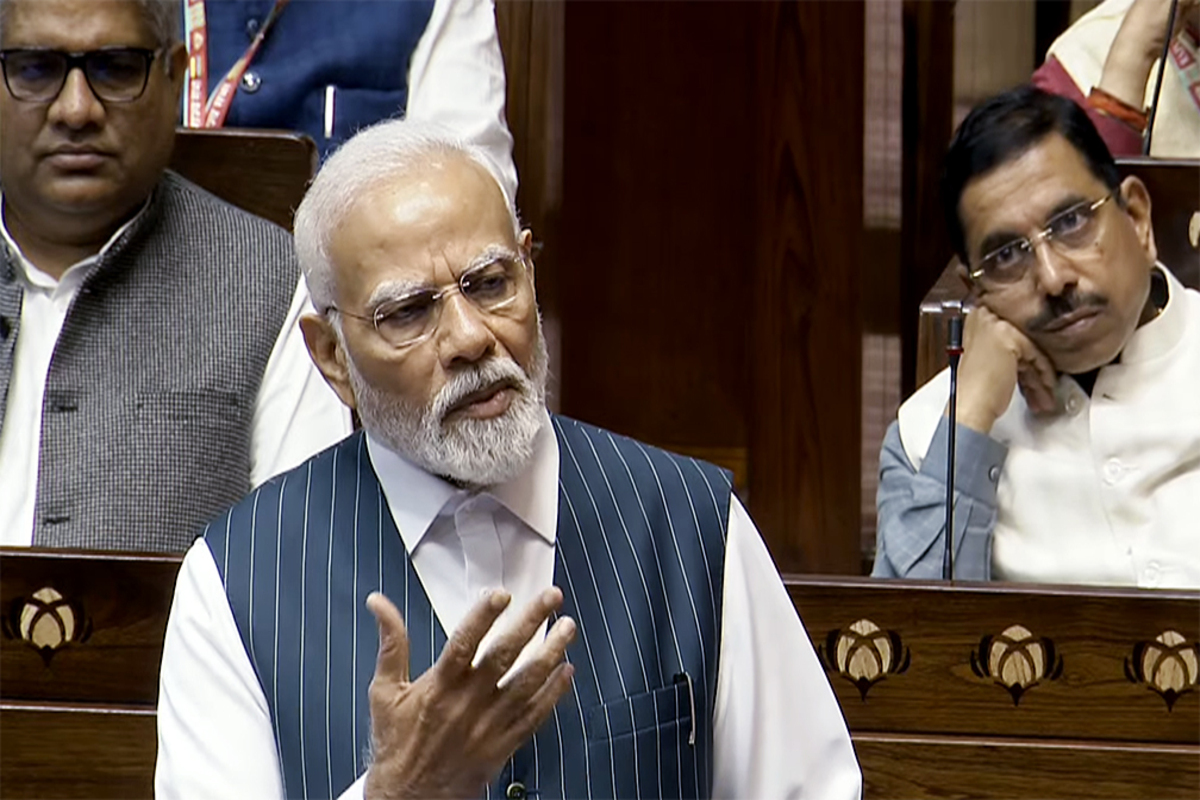“Happy 2025”: PM Modi extends New Year greetings
As the world steps into 2025, Prime Minister Narendra Modi on Wednesday extended his heartfelt wishes for a prosperous year ahead.
As India anticipates the unveiling of its interim budget, all eyes are on Prime Minister Narendra Modi’s strategic approach in steering the nation’s economic trajectory.

Prime Minister Narendra Modi (ANI Photo/Sansad TV)
As India anticipates the unveiling of its interim budget, all eyes are on Prime Minister Narendra Modi’s strategic approach in steering the nation’s economic trajectory. In a departure from the conventional pre-election trend of heavy social spending, Mr Modi and his Finance Minister are likely to place a calculated bet on popularity over populism, opting for a budget that emphasises infrastructure development to sustain economic momentum. The budget, set to be announced on February 1, is projected to carry a distinct political message of inclusive growth.
Rather than succumbing to the temptation of significant fiscal giveaways, the government appears committed to striking a delicate balance between political messaging, fiscal prudence, and a continued focus on capital expenditure. This approach reflects a nuanced understanding of India’s economic landscape and the delicate balance between governance and voter appeal. One notable aspect of this strategy is the expected emphasis on doubling the annual pay-out to women farmers. This move aims to resonate with women voters, a crucial demographic, while being fiscally conservative with a modest annual cost. It’s a shrewd move, showcasing an understanding of demographic nuances without jeopardising overall fiscal health.
Advertisement
Simultaneously, the government is poised to maintain major subsidies at the current year’s level, signalling a commitment to fiscal restraint. Mr Modi’s decision to extend the free food grain programme for the next five years aligns with his long-standing subsidised food grain initiative. This move, while a politically astute continuation, also underlines the government’s dedication to strategic, cost-effective social welfare programmes. Crucially, the plan to reduce the fiscal deficit in the upcoming fiscal year is a testament to the government’s commitment to discipline. In an era where the global economy is grappling with uncertainties, India’s decision to prioritise fiscal consolidation indicates a prudent and forward-thinking economic stance. The budget’s spotlight on infrastructure spending, even in the face of opposition criticism on youth unemployment, demonstrates the government’s confidence in its growth-centric policies. By heavily investing in infrastructure and simultaneously enticing both foreign and domestic manufacturers through incentives, Mr Modi aims to create an environment conducive for job creation over the long term.
Advertisement
This budget strategy also reflects a subtle confidence in Mr Modi’s personal popularity. Recent state elections have bolstered the ruling party’s position, leading strategists to conclude that the government possesses enough political goodwill to balance fiscal responsibility with the need for strategic giveaways. The growth impulse witnessed in India’s economy, driven by robust public spending, further supports Mr Modi’s approach.
With a forecasted growth of 7.3 per cent for the full year ending March 31, India boasts the world’s fastest pace for a major economy. The projected 20 per cent year-on-year increase in capital expenditure for 2024-25 aligns with the government’s overarching strategy of stimulating private sector investment. In an election year, where the stakes are high, Mr Modi’s pragmatic approach appears to be a well-calibrated mix of fiscal responsibility and strategic populism.
Advertisement